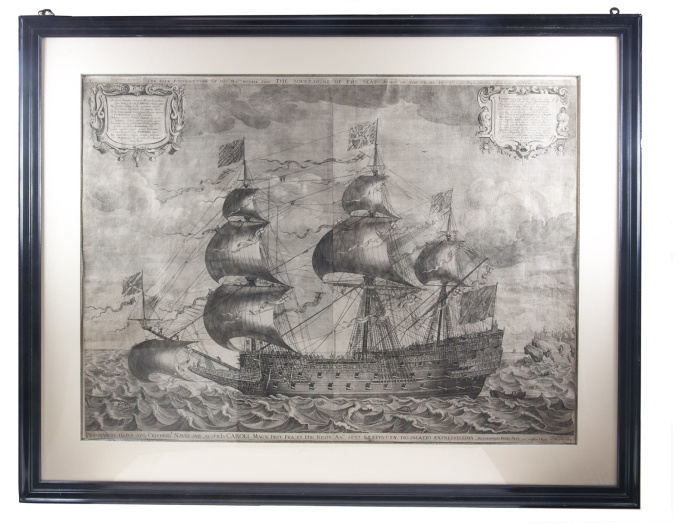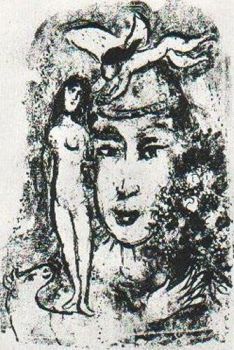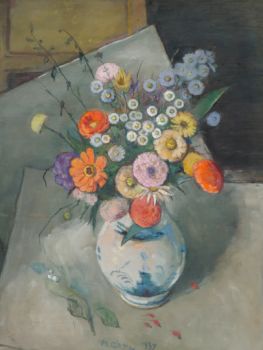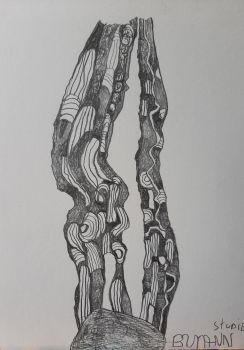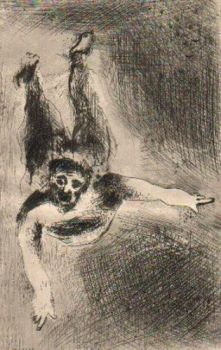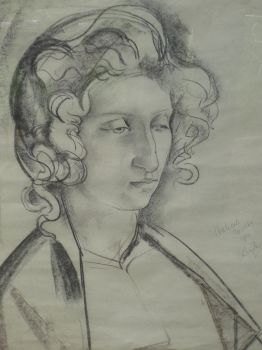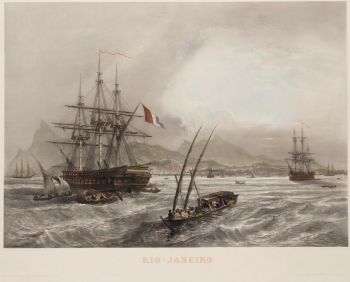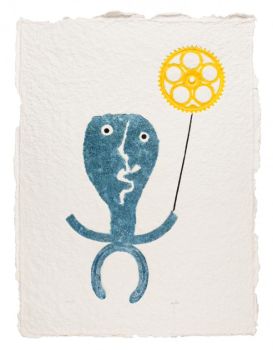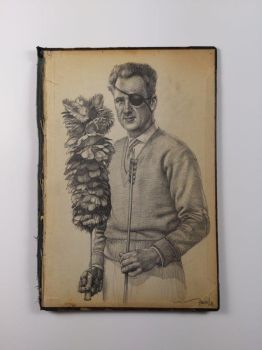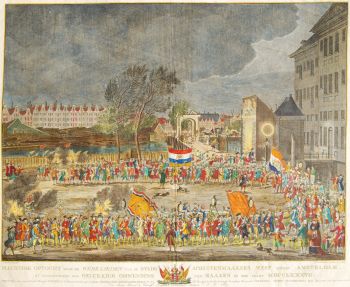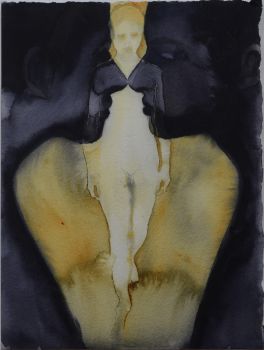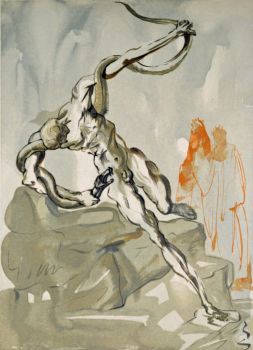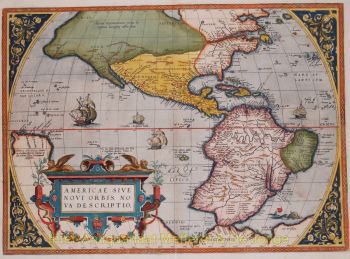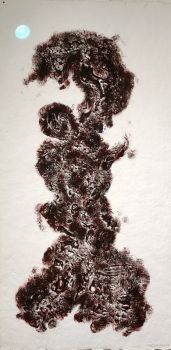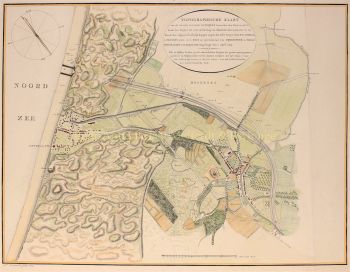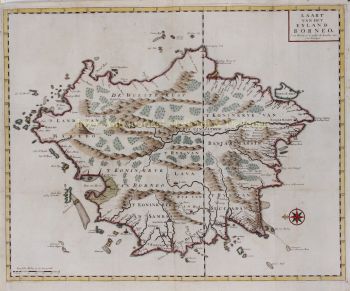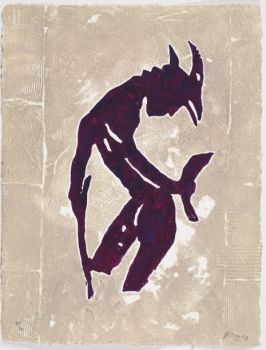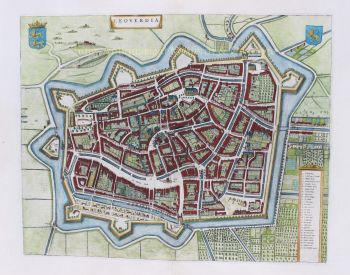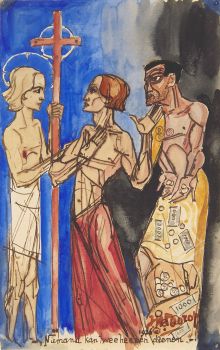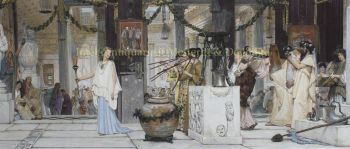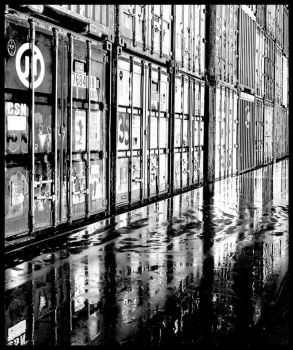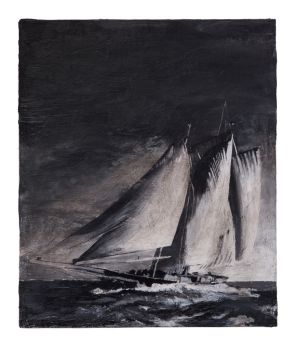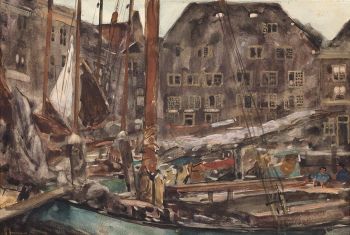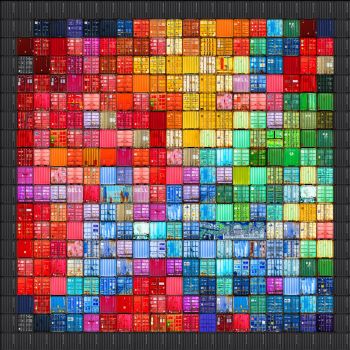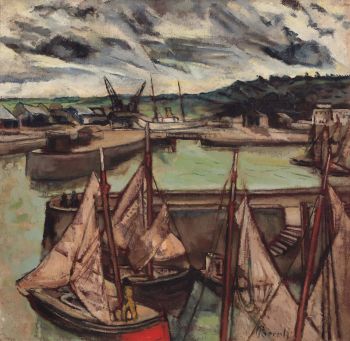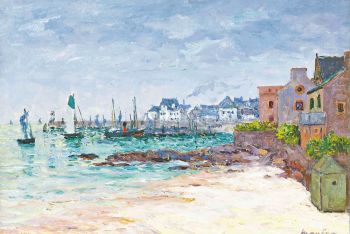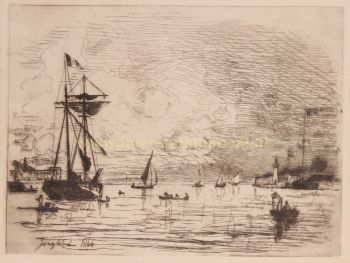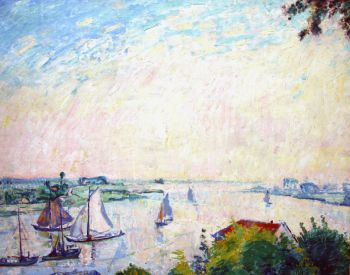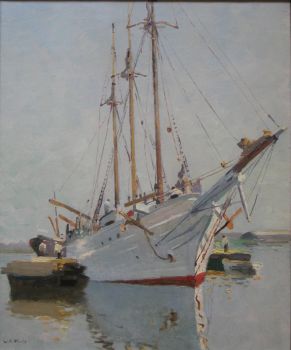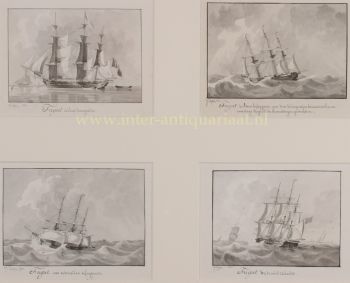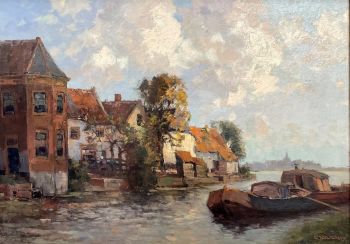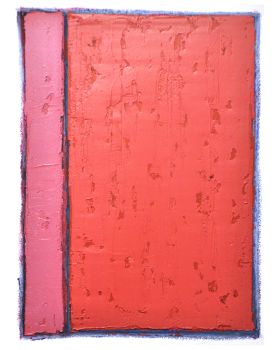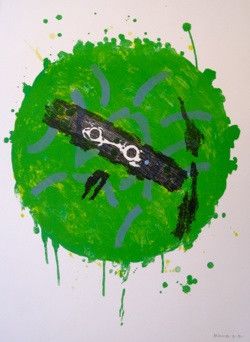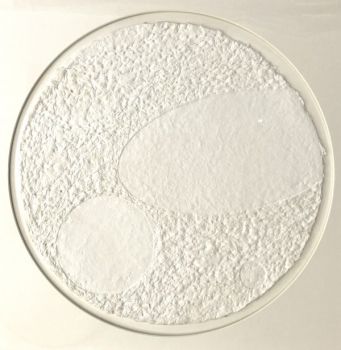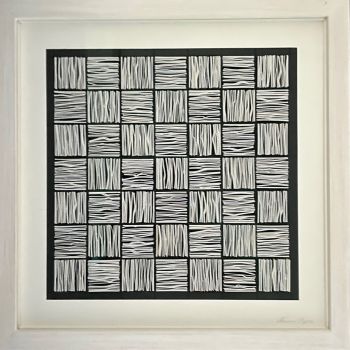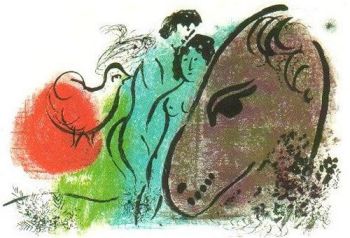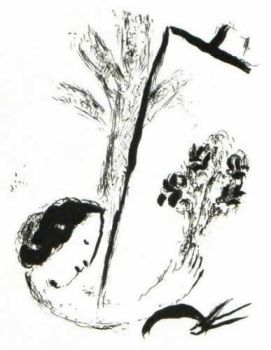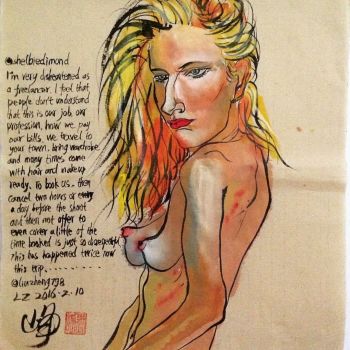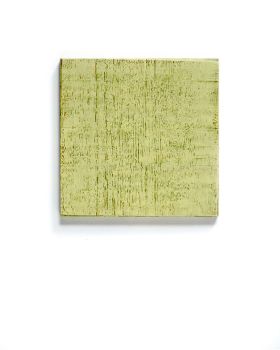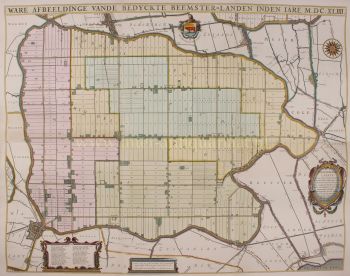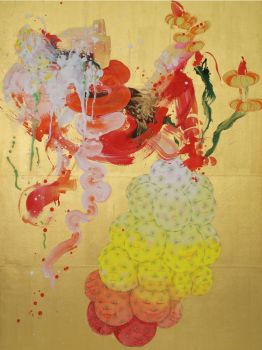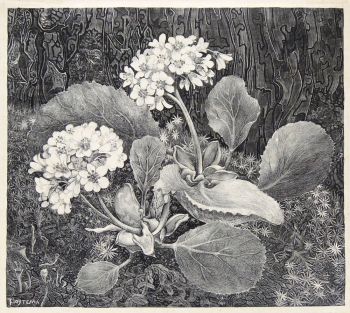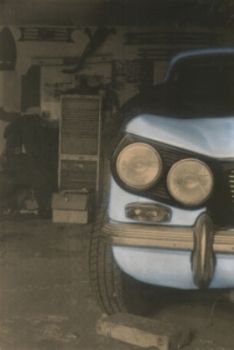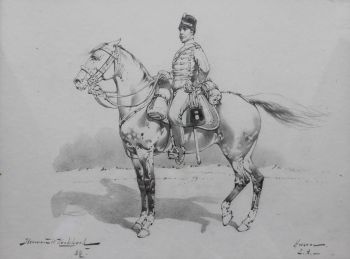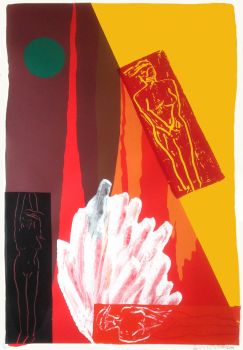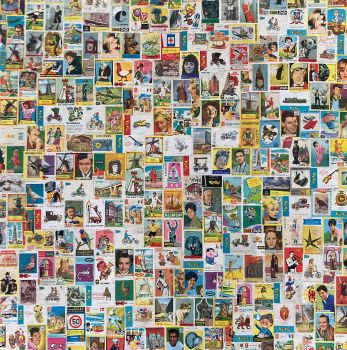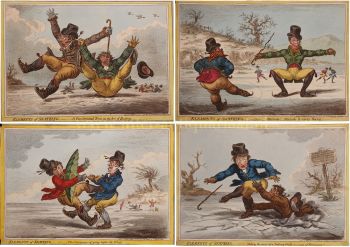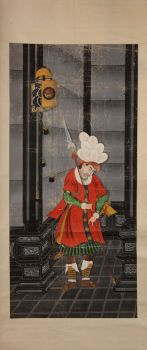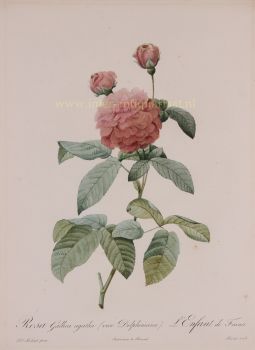Magnificent engraving of the 17th-century warship the “Sovereign of the Seas”, surpassing all her co 1637
John Payne
TintaPapel
66 ⨯ 99 cm
Actualmente no disponible a través de Gallerease
- Sobre la obra de arteThe true portraicture of His Ma[jes]ties. royall ship the Soveraigne of the Seas built in the yeare 1637.
[London, Peter Pett, 1637/38]. Large engraving (66.5 x 91 cm), printed from two plates on two sheets, assembled to make a single print. With title in English across the head, a slightly different Latin title across the foot (both outside the image area), Payne's name and privilege to the right of the Latin title, and two decorated cartouches with laudatory verses in the upper corners. In passepartout (not mounted) and easily detachable framed (90 x 114 cm).
Rare and magnificent engraving of the extraordinary 17th-century English warship the Sovereign of the Seas, shown in full sail, flying 5 flags and more than a dozen pennons. With her more than 1500 tons and more than 100 guns, she surpassed all her contemporaries in size and gun power and cost about ten times as much as an average naval gunship. Besides being "one of the best known naval prints belonging to the seventeenth century … extraordinarily rich of detail and of the greatest possible interest" (Chatterton), it is also by far the largest English engraved view to survive from the first half of the century. For the engraving, Payne had, most likely, access to the builder's draughts and plans and must have collaborated with Peter Pett for the engraving to be as representative of the ship as possible.
Trimmed to the printed image at the two sides, not always completely straight, a few small tears (mostly repaired) at the head and foot, a few tiny spots and a tiny blemish, but still generally good, very attractive and printed in a crisp impression.
BM online cat. 1854,0614.252; H. Busmann, Sovereign of the Seas (2002), pp. 39-46 (locates 7 copies); Chatterton, Chats on naval prints, pp. 56-57. - Sobre el artistaJohn Payne (1607-1647) fue un grabador inglés, uno de los primeros exponentes del arte del grabado en Inglaterra. Su mejor trabajo fue el más fino producido por un grabador nativo que trabajó durante el reinado de Carlos I. Parece que Payne aprendió a grabar de William y Simon de Passe, y su manera se parece mucho a la de ellos. Dos de sus retratos, los de Robert Devereux, segundo conde de Essex, y Henry de Vere, décimo octavo conde de Oxford, están impresos en marcos grabados por William de Pass, y es una indicación de que, al principio de su carrera, Payne cooperó con William de Passe en algunos proyectos. George Vertue escribió sobre los rumores de John Sturt, otro grabador, que Payne era un derrochador que amaba la bebida más que el trabajo y no era confiable. Por ejemplo, alega que Payne se había olvidado de aceptar una invitación para asistir a la corte de Carlos I, donde se le ofrecería el puesto de grabador real. Su forma de vida irregular resultó en su muerte prematura por "circunstancias de indigencia". Esto debe haber sido alrededor de 1647, ya que Thomas Rawlins en su Calanthe, publicado en 1648, tiene un epitafio sobre Payne, como "fallecido recientemente". Payne tenía una habilidad considerable en el grabado, y muchos de sus retratos y portadas tienen un gran mérito. Su obra principal es el gran grabado, realizado en dos planchas, del gran barco "The Sovereign of the Seas", construido por Peter Pett en Deptford en 1637. John Evelyn en su Sculptura ensalza este grabado, así como los retratos de Payne del Dr. Alabaster, Sir Benjamin Rudyerd y otros. Entre otros retratos grabados por Payne estaban los del obispo Joseph Hall, el obispo Lancelot Andrews, Sir Edward Coke, Hobson the Carrier, Sir James Ley, Christian of Brunswick, etc., y entre las portadas las de The Works of John Boys, DD, 1629, y al Herball de Gerarde, 1633. [3] Antony Gerard escribió la biografía de Payne en el Oxford Dictionary of National Biography y declaró en él que "las cincuenta y tres láminas conocidas de Payne, que llevan fechas entre 1620 y 1639, y la mayoría de las cuales son portadas de retratos o placas de título de libros, varían ampliamente en Los peores no son mejores que los de muchos contemporáneos, pero los mejores, como el retrato de Sir Benjamin Rudyerd de 1632, son excepcionales ". La Galería Nacional de Retratos tiene cuatro retratos de Payne y atribuye 55 obras de su colección a él, aunque algunos son "posiblemente de John Payne".
Artwork details
Categoría
Tema
Material y Técnica
Colour
Related artworks
- 1 - 4 / 24
- 1 - 4 / 24
Rene Rietmeyer
TOKYO - Kudan House - January 2021 #052021
Precio a consultarEuropean Cultural Centre Collection
Shiba Kokan
Pintura de un holandés de fantasíaearly 19th
Precio a consultarZebregs & Röell - Fine Art - Antiques
1 - 4 / 24

